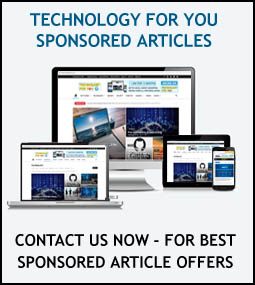The workplace is undergoing a profound transformation driven by technological advancements, changing societal expectations, and evolving business needs. As we look to the future, several key trends and shifts are expected to shape how we work, where we work, and the nature of work itself. This detailed article explores the future of the workplace and its implications for employers and employees.
1. Remote and Hybrid Work Models
Increased Flexibility
The COVID-19 pandemic accelerated the adoption of remote work, and this trend is here to stay. Companies have realized the benefits of flexible work arrangements, including increased employee satisfaction and productivity. Hybrid models, where employees split their time between the office and remote locations, are becoming the norm.
Technological Enablement
Advanced communication and collaboration tools, such as video conferencing, project management software, and cloud services, are critical in supporting remote and hybrid work. These technologies enable seamless interaction and productivity, regardless of physical location.
2. Technological Integration
Artificial Intelligence and Automation
AI and automation are transforming various aspects of work. Routine tasks are increasingly automated, allowing employees to focus on higher-value activities. AI-powered tools can assist in decision-making, data analysis, and customer service, enhancing efficiency and accuracy.
Virtual and Augmented Reality
VR and AR are finding applications in training, collaboration, and design. Virtual meetings, immersive training programs, and interactive product demonstrations are becoming more prevalent, offering new ways to engage and innovate.
3. Evolving Workspaces
Smart Offices
The workplace of the future will be equipped with smart technologies that enhance comfort, productivity, and sustainability. IoT devices, smart lighting, and climate control systems will create environments that adapt to employees’ needs.
Co-Working Spaces
Co-working spaces offer flexibility and community for remote workers and freelancers. These spaces are evolving to provide not just a desk but also networking opportunities, professional development, and a sense of belonging.
4. Focus on Employee Well-being
Mental Health and Wellness Programs
Employers are increasingly recognizing the importance of mental health. Comprehensive wellness programs, including mental health support, physical fitness initiatives, and stress management resources, are becoming standard.
Work-Life Balance
Flexible schedules and remote work options help employees achieve better work-life balance. Companies are also encouraging time off and creating policies that prevent burnout, such as limiting after-hours communications.
5. Diverse and Inclusive Workplaces
Embracing Diversity
The future workplace will prioritize diversity and inclusion. Diverse teams are proven to be more innovative and effective. Employers are focusing on inclusive hiring practices, creating diverse leadership teams, and fostering a culture of belonging.
Cultural Competence
As teams become more global, cultural competence will be crucial. Understanding and respecting different cultural perspectives enhances collaboration and prevents misunderstandings.
6. Continuous Learning and Development
Lifelong Learning
The rapid pace of technological change means that skills quickly become outdated. Continuous learning and upskilling are essential for employees to stay relevant. Employers will invest in training programs, online courses, and learning platforms.
Personalized Learning Paths
AI and machine learning can create personalized learning experiences tailored to individual needs and career goals. Adaptive learning platforms can assess skill gaps and recommend specific training resources.
7. Sustainability and Corporate Responsibility
Green Workplaces
Sustainability will be a major focus. Companies are adopting eco-friendly practices, such as reducing waste, using renewable energy, and creating sustainable supply chains. Green certifications and standards will become more prevalent.
Corporate Social Responsibility (CSR)
Organizations will be expected to demonstrate their commitment to social and environmental causes. CSR initiatives, such as community engagement, ethical sourcing, and philanthropy, will be integral to business strategies.
8. Data-Driven Decision Making
Analytics and Insights
Data analytics will play a crucial role in decision-making. Businesses will leverage data to understand customer behavior, optimize operations, and drive innovation. Predictive analytics can provide insights into market trends and employee performance.
Employee Monitoring and Privacy
While data can enhance productivity and security, it also raises concerns about privacy. Employers will need to balance monitoring with respect for employee privacy, ensuring transparent and ethical use of data.
9. Agile and Adaptive Organizations
Flexible Organizational Structures
Hierarchical structures are giving way to more agile and flexible organizations. Cross-functional teams and flat hierarchies enable faster decision-making and innovation.
Resilience and Adaptability
The ability to adapt to change is critical. Organizations must be resilient, able to pivot quickly in response to market shifts, technological advancements, and global events. This requires a culture of continuous improvement and innovation.
Final thoughts
The future of the workplace is dynamic and multifaceted, characterized by technological integration, flexible work models, and a focus on well-being and sustainability. Employers who embrace these changes and foster an inclusive, adaptive, and innovative culture will be well-positioned to thrive in this evolving landscape. For employees, continuous learning and adaptability will be key to navigating and succeeding in the workplace of the future. As we move forward, the synergy between technology and human ingenuity will shape a more productive, inclusive, and fulfilling work environment.























